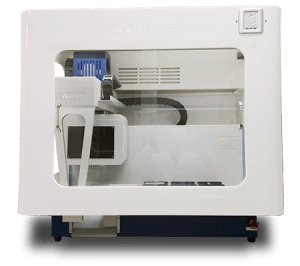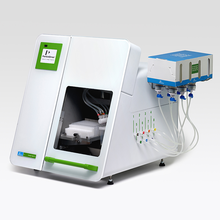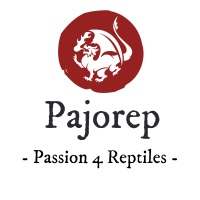
Nucleic extraction strategies can be generally described into two distinct sorts:
- Arrangement based strategies
- Strong stage based strategies
Arrangement based strategies:

A considerable lot of the early techniques for nucleic acid extraction instrument relied upon pounding solidified organic examples and afterward blending them in with arrangements of synthetic substances concocted to make it conceivable to purge RNA as well as DNA.
- Cesium Chloride Gradient Centrifugation:
This strategy depends on the wonders of light and explicit thickness. Cesium chloride (CsCl) is an incredibly thick salt. At the point when arrangements of this salt are exposed to centrifugation at high speeds (regularly >100,000 rpm), the CsCl sets up a focus inclination, where it is exceptionally gathered toward one side, or side, of the axis tube that it’s in, and substantially less assembled at the other.
At the point when DNA is within sight of a particle called ethidium bromide, it will tie to it and become fluorescent when under UV light. The ethidium bromide additionally alters the thickness of DNA with the goal that it advances toward the focal point of the cylinder upon centrifugation. Contaminants will move to various positions, and along these lines will be isolated from the DNA, which can be effectively observed and recuperated since it will be fluorescent. Ensuing advances will, at that point, separate the DNA from the CsCl and ethidium bromide.
- Guanidinium Thiocyanate-Phenol-Chloroform nucleic acid extraction:
A fluid arrangement of the salt guanidinium thiocyanate, when blended in with solvents phenol and chloroform, takes into consideration viable cleansing of RNA through an insignificant number of steps. At the point when tests are ground up and blended in with chloroform, phenol, sodium acetic acid derivation, and guanidinium thiocyanate, and exposed to centrifugation, the salt arrangement will isolate from the solvents – giving an upper fluid stage and a lower natural stage that comprises of the solvents. RNA will stay in the watery stage, while proteins, other nucleic acids, and different contaminants will move to the natural stage or the interface between the two stages.
- Cetyltrimethylammonium Bromide nucleic acid extraction:
This strategy is, for the most part, utilized for plant tests just as their parts like grains, seeds, and leaves. It is likewise utilized for some food tests. Nucleic acids and some different polysaccharides are insoluble in arrangements of 2% Cetyltrimethylammonium Bromide nucleic corrosive extraction (CTAB), at high pH. Unbiased polysaccharides and proteins are dissolvable.
- Chelex Extraction:
This procedure is used in the field of legal sciences for DNA extraction from various sources like buccal swabs, bloodstain cards, and hair. This technique utilizes a sap (exchange named Chelex®, those ties to regular inhibitors of the polymerase chain response (PCR) process. This yields a genuinely unrefined example, yet one that jams DNA and renders it valuable for PCR-based scientific investigation.
- Soluble Extraction:
This strategy is utilized for plasmid DNA separation, without anyone else for moderately rough arrangements, or as the initial phase in practically all plasmid purging procedures. It includes reaping microorganisms of enthusiasm from a culture media and thusly presenting the microscopic organisms to a profoundly basic arrangement. This is, for the most part, followed by blending the antacid concentrate in with the cleanser Sodium Dodecyl Sulfate, which expels proteins and most different contaminants.
